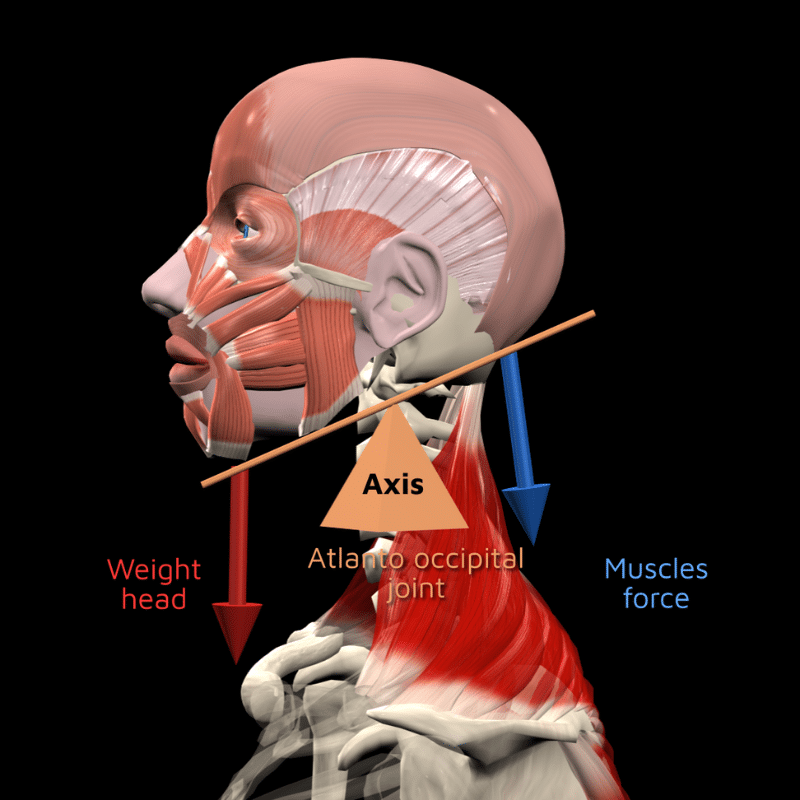Levers play a pivotal role in the human body, facilitating movement, lifting, and the application of force. These mechanisms are not only fundamental to machines but also are integral to our body’s functionality.
This Muscle and Motion article delves into the three types of levers found within the human body: first-class, second-class, and third-class levers, exploring their mechanics with real-life examples and detailed animation.
The mechanics of a lever
At its core, a lever is a rigid bar or beam pivoting around a fixed point, known as the axis. Two critical components form the basis of every lever:
- Effort arm – the distance between the axis and the point where the effort force is applied.
- Resistance arm – the distance between the axis and the point where the resistance force is applied.
When an object is in equilibrium, the product of the applied force and its distance from the pivot point (that is, the force arm, aka the effort arm) is equal to the product of the resistance force and its distance from the pivot point (resistance arm).
In simpler terms, the equation for equilibrium is:
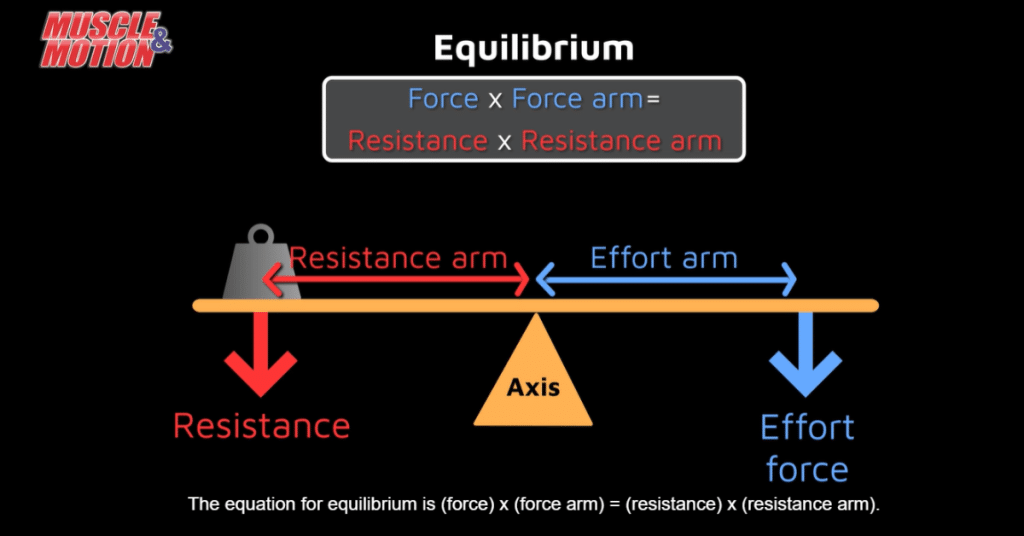
The mechanical advantage of a lever is determined by the position of these forces. The location of the effort force and the resistance force in relation to the axis dictates how much mechanical advantage the lever provides.
First-class lever
In a first-class lever, the axis is situated between the weight (resistance) and the force.
The mechanical advantage can be greater or less than one, depending on the relative lengths of the effort and resistance arms.
For instance, the atlanto-occipital joint, located between the head and the first vertebra, is a classic example of a first-class lever. Here, the head acts as the resistance, the joint serves as the axis, and the muscles like the trapezius provide the force.
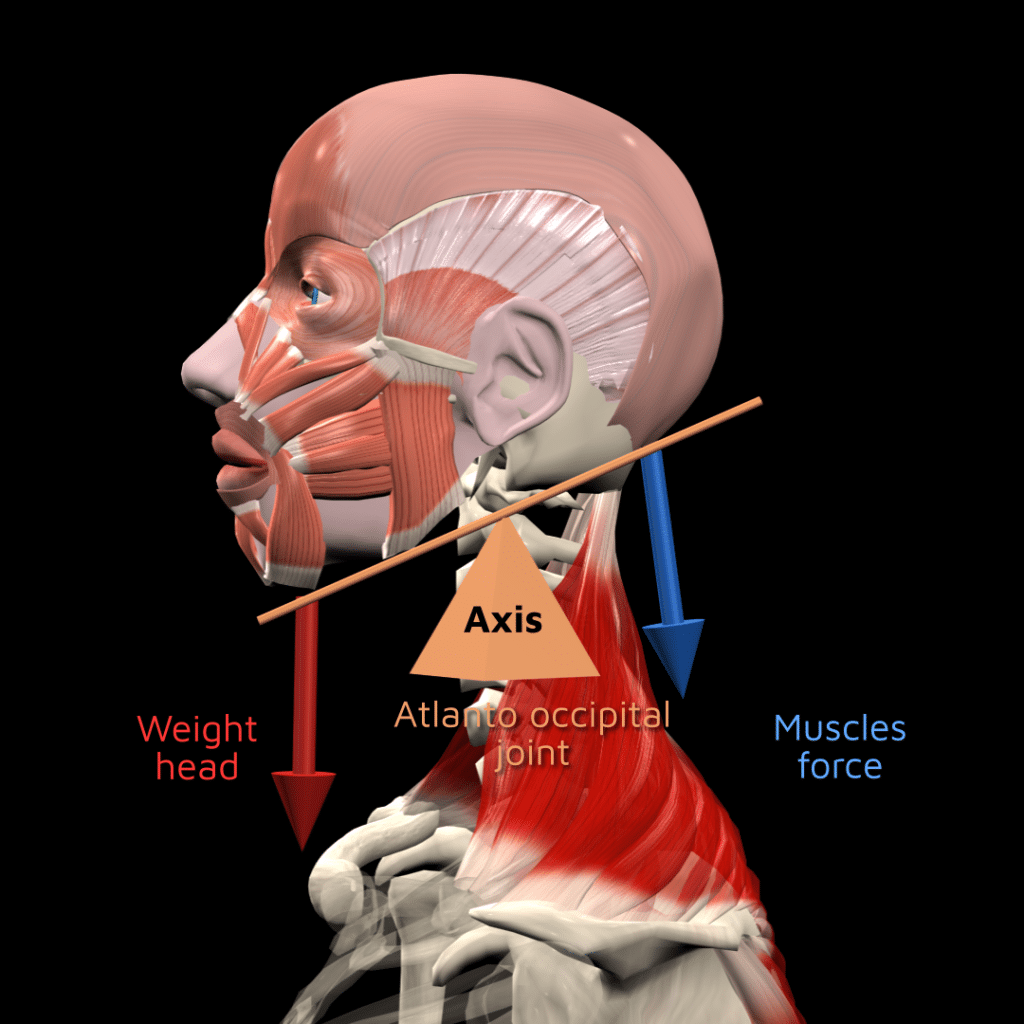
Second-class lever
In a second-class lever, the weight (resistance) is positioned between the axis and the force.
This setup always results in a mechanical advantage greater than one but at the cost of a reduced range of motion.
An example within the human body, though less common, is the ankle joint when standing on tiptoes. The axis is the metatarsophalangeal joints, the resistance is the body’s weight, and the force is applied through the Achilles tendon by the gastrocnemius and soleus muscles.
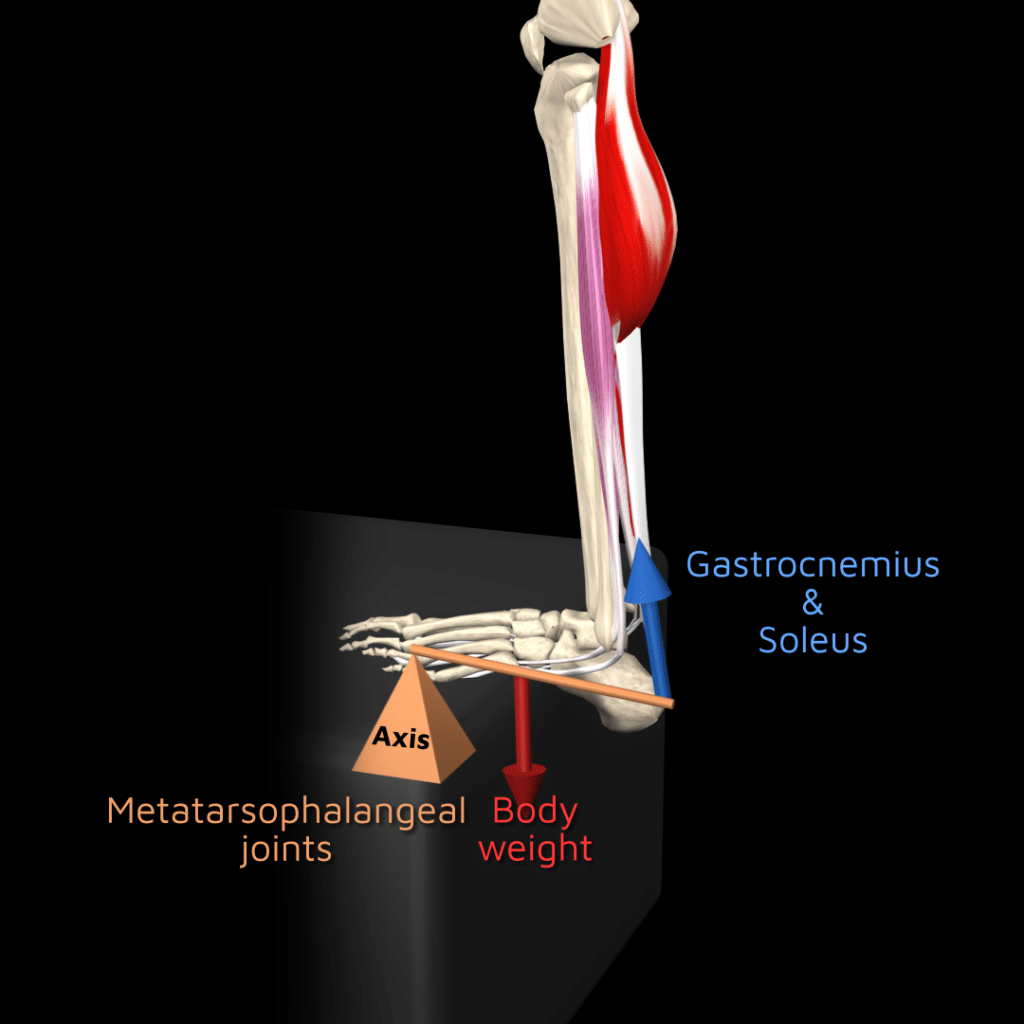
Third-class lever
The most frequently used in the human body, third-class levers have the force applied between the resistance and the axis.
This arrangement requires a greater force to move the weight but allows it to travel a greater distance, resulting in a mechanical advantage of less than one.
A prime example is the elbow joint. Here, the elbow serves as the axis, the forearm and any held weight act as the resistance, and the biceps muscle applies the force.
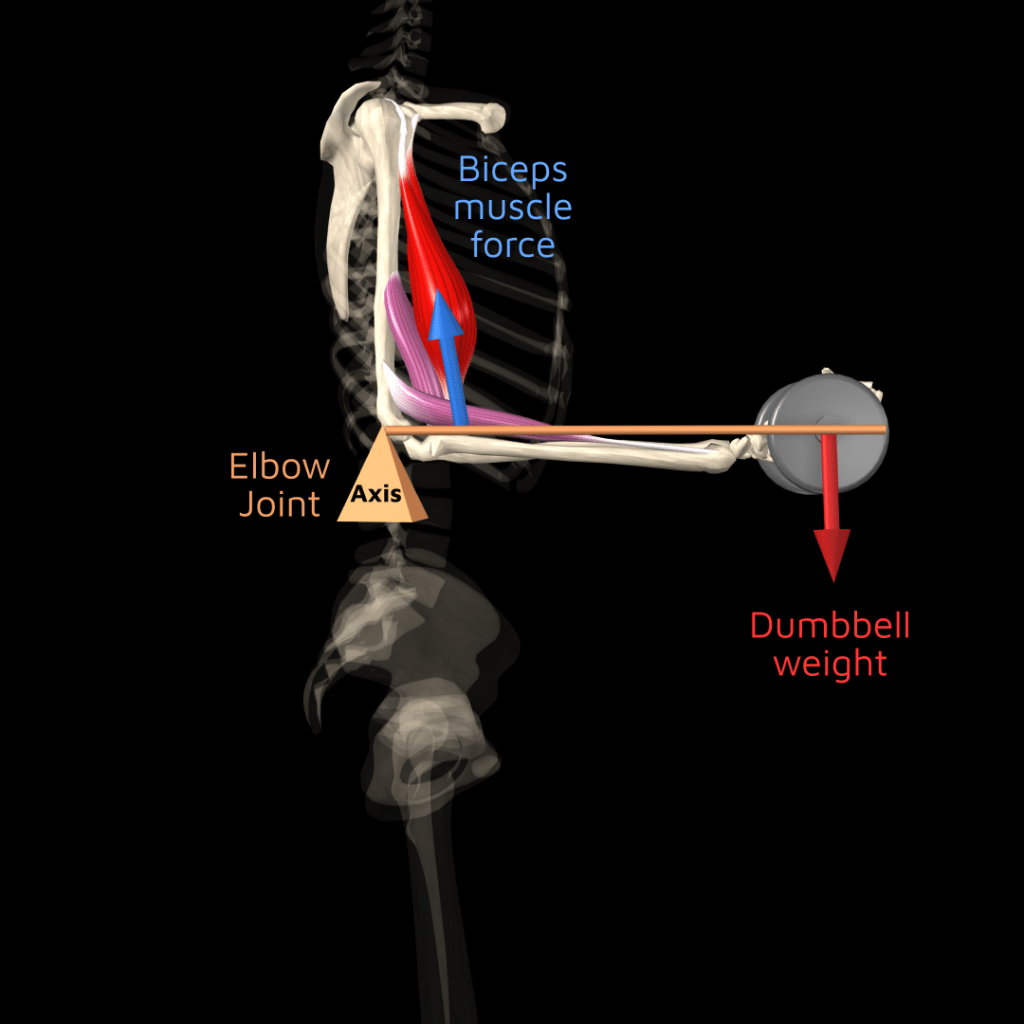
In summary, the human body utilizes these three types of levers – first-class, second-class, and third-class – in various ways, each contributing to our ability to perform complex movements with power and efficiency.
From the atlanto-occipital joint (first-class lever) to the ankle joint (second-class lever) and the elbow joint (third-class lever), these levers are fundamental to our daily physical activities, showcasing the remarkable engineering of the human body.
Ever wondered what makes our anatomical animations so accurate and engaging? Click here to learn about our Quality Commitment and the experts behind our content.
At Muscle and Motion, we believe that knowledge is power, and understanding the ‘why’ behind any exercise is essential for your long-term success.
Let the Strength Training App help you achieve your goals! Sign up for free.
